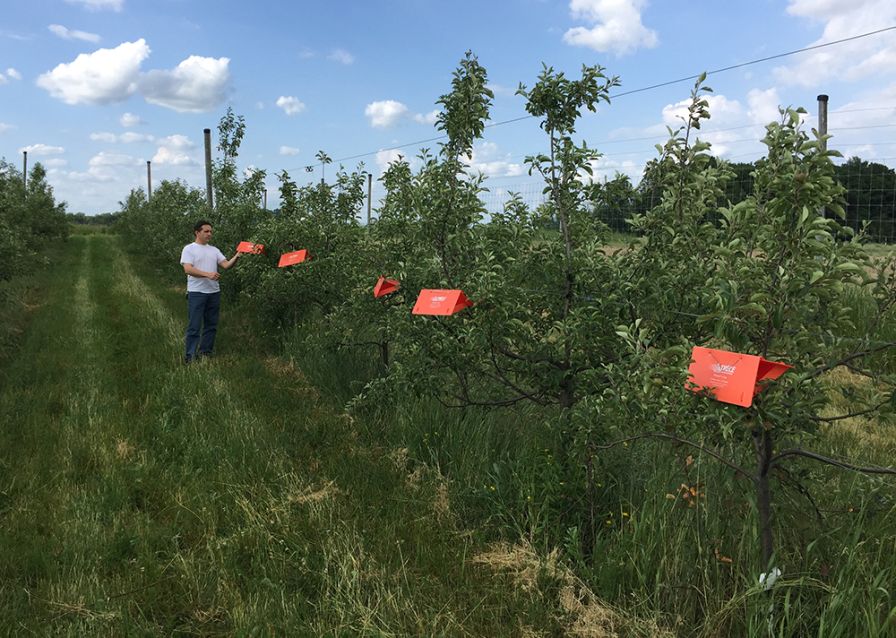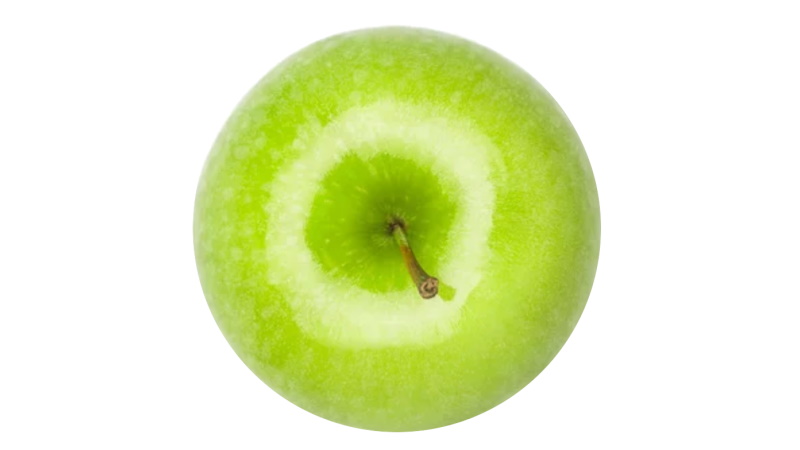Study Suggests Closer-Proximity Lures Help Increase Insect Pest Catches

Christopher Adams, Ph.D., postdoctoral researcher in entomology at Michigan State University, checks a line of five pheromone traps for codling moth in an orchard. Adams and colleagues have found that placing five traps in a line and averaging the catch number from them produces a more reliable sampling of pest abundance, less prone to variability and false positives or false negatives, than a single trap placed on its own. (Photo: Christopher Adams, Ph.D.)
For the past decade, researchers led by James Miller, Ph.D., at Michigan State University (MSU) have been refining our understanding of how insects move and interact with pheromone traps. In particular, they’ve studied the codling moth (Cydia pomonella), a global pest of apple and pear orchards, and found the standard pheromone traps for the pest emit plumes of no more than 17 feet.
“Rather than envisioning a codling moth pheromone trap functioning as a vacuum cleaner sucking up males from great distances,” Miller says, “we deduced that it had very weak ‘suction’ and that the males were doing most of the work in moving around randomly until arriving at that weak suction.”
The problem, then, with a pest that staggers about and a trap that is not broadly attractive is variability: one trap in a field might catch zero moths, or it might catch 30. And when a pesticide application for codling moth could cost $1,000 for a 50-acre plot, that kind of randomness makes for a potentially costly lack of reliability in predicting the actual abundance of a pest.
Placing more pheromone traps at multiple locations throughout an orchard to get a more representative sampling, however, has been an unattractive option for pest managers for the simple added time cost of visiting multiple trap locations throughout the season. But, a new approach that Miller and colleagues have tested effectively addresses that problem: lining up multiple traps in very close proximity to each other.
In an experiment reported in the Journal of Economic Entomology, a team led by MSU postdoctoral researcher Christopher Adams, Ph.D., shows that five codling moth pheromone traps placed in a line, each about 13 feet apart, produce catch numbers — when averaged across all five traps per line — that are much less variable than single traps at their own location, says EntomologyToday.
In their report, Adams and co-authors write that they were inspired by long-line fishing: “In pondering this problem, we were struck by its parallels to the challenge fishermen face in needing to deploy multiple baited hooks across fish habitat while minimizing travel and service time per hook. A favored solution to this optimization problem in fishing is long-line fishing, where multiple baited hooks descend from short snood lines at increments from a tow-line. This configuration dramatically raises the probability of catch by summing the reaches of plumes emanating from all bait point-sources.”










